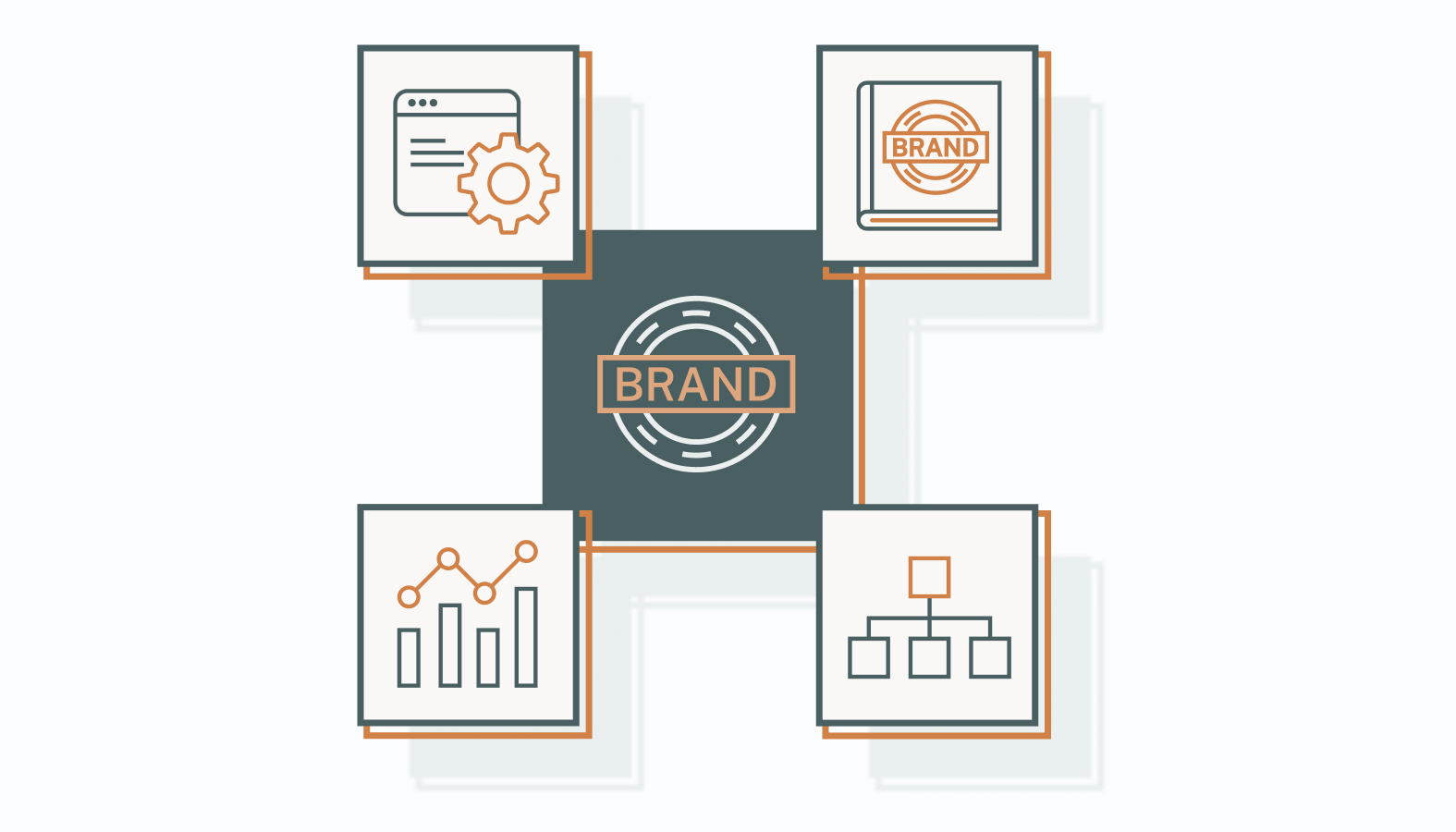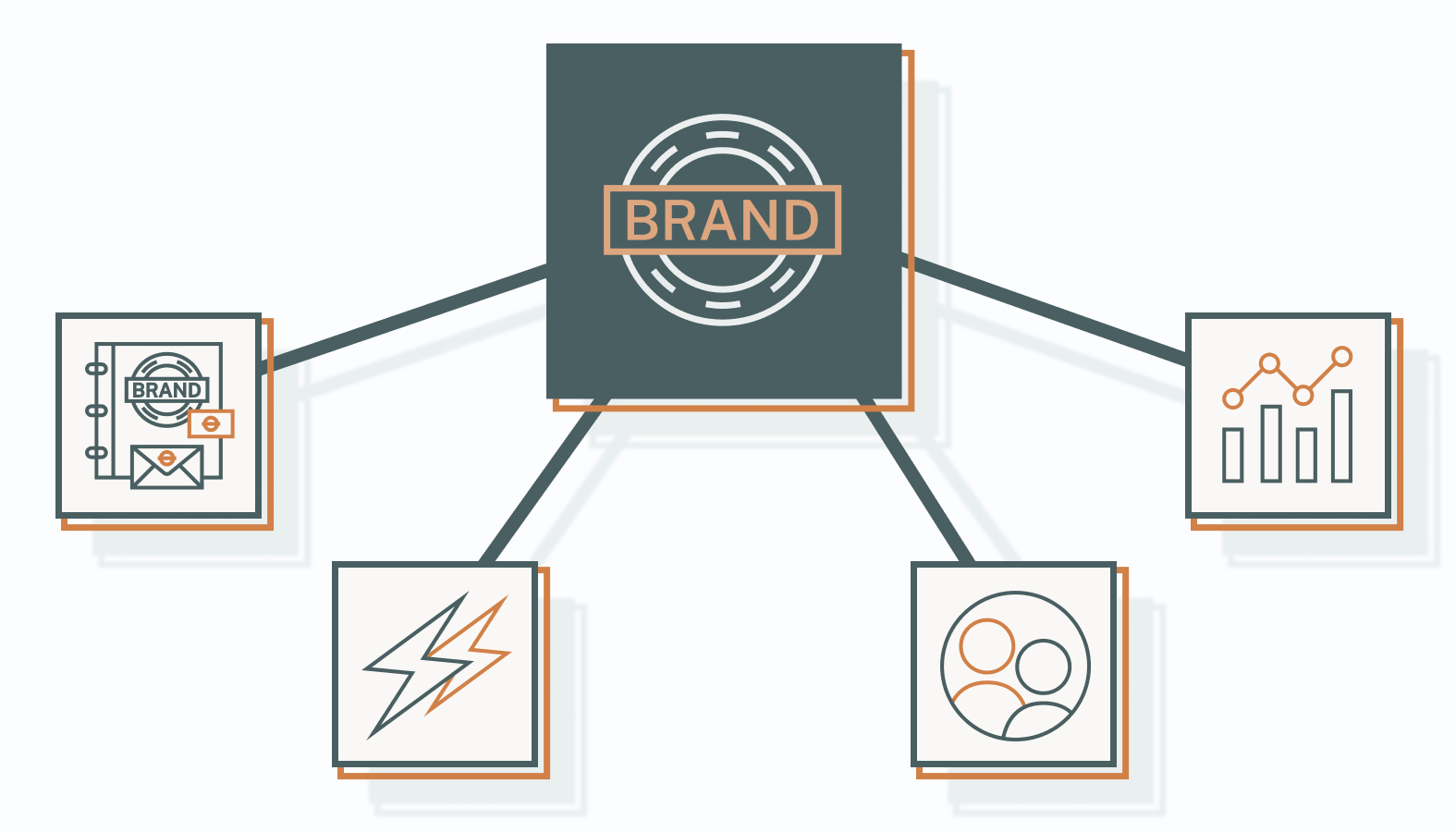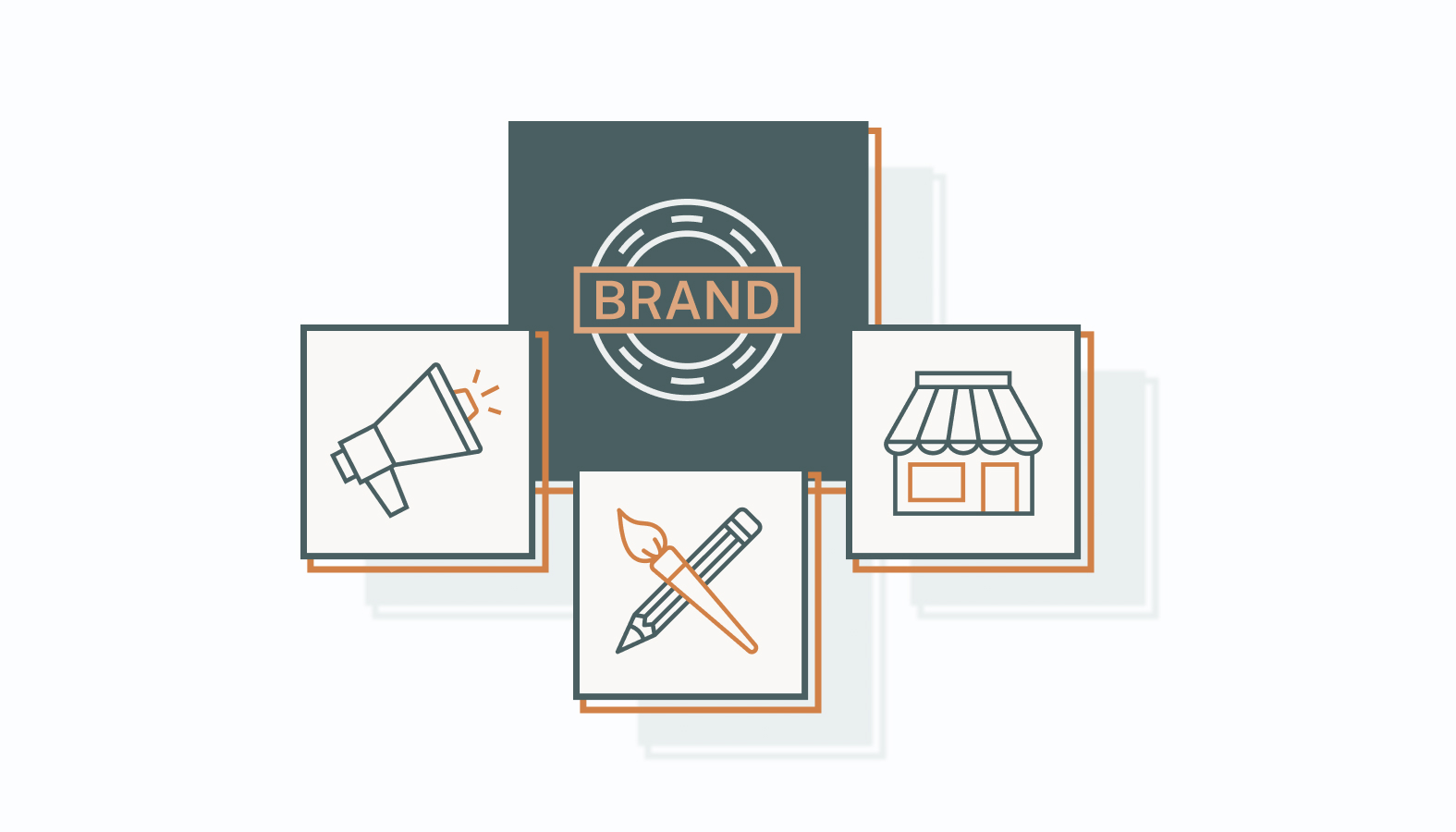Running a modern brand without the right tools is like trying to win a race in flip-flops — you’ll move, but you won’t get far. A brand management platform gives you the speed and structure you need by pulling all your assets, guidelines, and performance data into one place. No more scattered files, missed handoffs, or guessing whether your message is landing.
With the right platform, your team works faster, collaborates better, and makes decisions backed by real data instead of hunches. In a landscape where every impression counts and competitors move fast, having a streamlined system isn’t just nice to have. It’s the edge that keeps your brand sharp, consistent, and impossible to ignore.
So how do these platforms actually work, and which ones deliver the most value in 2025? Let’s break down the essentials, the must-have features, and the top platforms worth your attention.
Essentials of Brand Management Platforms
In today’s digital sprint, consistency isn’t optional; it’s survival. A brand management platform is the control center that keeps your assets, guidelines, and performance insights under one roof.
By centralizing the chaos, it ensures your brand looks sharp, your team stays aligned, and your strategy doesn’t get lost in the shuffle, no matter how many channels or campaigns you’re juggling.
Must-Have Features of Effective Brand Management Platforms
Of course, not all platforms are created equal. The right one gives your brand the power to scale without breaking stride. From asset control to real-time analytics, certain features separate the good from the game-changing.
Here’s what to look for if you want a platform that actually pulls its weight.
Centralized Brand Asset Management
Centralized asset management keeps all your materials in one place.
Teams can quickly find logos, templates, and other assets, eliminating wasted time and avoiding inconsistencies.
Every project draws from the same source, so your brand always looks intentional and professional.
Customizable Brand Guidelines
Flexible brand guidelines protect your identity while allowing local or campaign-specific adjustments. They preserve your core values while giving teams room to adapt to different markets. This balance is essential for brands with multiple audiences or global reach.
Real-Time Analytics and Reporting
Real-time data shows what’s working and what isn’t. By tracking performance and engagement continuously, teams can adjust strategies on the fly, optimize campaigns, and make smarter decisions. Analytics like these turn intuition into actionable insights.
Integration with Existing Tools
A platform works best when it fits into your workflow. Integrations with marketing, design, and collaboration tools ensure smooth processes and unified data. Teams spend less time juggling software and more time executing strategies that maintain brand consistency.
Together, these features make a brand management platform a powerful tool for keeping brands coordinated, adaptable, and competitive.
Leading Brand Management Platforms to Consider in 2025
The brand management software market is crowded, but a few names are worth considering. The best platforms combine usability, smart features, and a proven track record with real teams.
Below are five standouts, each bringing something different to the table depending on your priorities.
Attest: Leveraging Brand Tracking Surveys
Who It’s For: Marketing leaders and strategy teams who need brand health metrics to guide decisions.
Most companies say they’re customer-centric. Attest helps you prove it. By running brand tracking surveys, you get clear visibility into how people actually perceive your brand over time.
The data isn’t just a vanity score — it’s fuel for sharpening your positioning, fine-tuning your messaging, and spotting gaps before they turn into problems.
If you want to ground your brand strategy in real consumer feedback instead of guesswork, Attest makes it possible.
- Pros: In-depth consumer insights; strong tracking capabilities; easy-to-digest reports.
- Cons: Survey costs scale quickly; insights are only as good as survey design.
- Cost: Pricing starts around $25,000/year for enterprise-level use, with custom packages based on scale.
Brand24: Mastering Social Media Monitoring
Who It’s For: PR teams, social media managers, and customer service teams watching for brand mentions.
Your brand is being talked about whether you’re in the room or not. Brand24 ensures you never miss those conversations. It tracks mentions, sentiment, and trends across social media, giving you the chance to respond quickly, whether that’s neutralizing a brewing issue or amplifying a wave of positive buzz.
In a landscape where reputation moves at the speed of Twitter (or X, depending on your level of nostalgia), Brand24 is your early warning system and engagement tool in one.
- Pros: Real-time monitoring, sentiment analysis, and affordability compared to enterprise tools.
- Cons: Limited historical data; analytics depth lags behind premium competitors.
- Cost: Plans start around $99/month; higher tiers run $179–$399/month depending on volume.
HubSpot: The All-in-One Brand Management Solution
Who It’s For: Mid-size to enterprise companies that need a full-stack marketing and CRM platform.
If you want a single platform that pulls multiple marketing functions under one roof, HubSpot still sets the standard. Its integrations make it easy to connect CRM, content, automation, and analytics in one seamless system. That means fewer silos, less duplicated effort, and a clearer picture of how your brand activities actually drive results.
It’s less about shiny features and more about alignment. HubSpot keeps your brand narrative consistent across every touchpoint.
- Pros: Unified system; excellent integrations; robust automation and analytics.
- Cons: Costs scale steeply as your team grows; setup can be resource-intensive.
- Cost: Starter plans begin at $20/month, but full Marketing Hub features run $890–$3,600/month.
Canva: Design Power for Brand Consistency
Who It’s For: Marketing teams, startups, and SMBs needing quick, consistent visuals without a design team.
Not every team has a full-time design department, but every brand needs consistent visuals. Canva bridges that gap by giving marketers, social teams, and even non-designers the ability to create on-brand graphics fast.
With shared templates, locked brand colors, and intuitive drag-and-drop tools, Canva ensures your content looks professional and aligned without endless back-and-forth with a creative team. It’s a democratized design, and it keeps your brand polished at scale.
- Pros: Intuitive UI; massive template library; strong brand kit features.
- Cons: Limited advanced design capabilities; some features locked behind higher tiers.
- Cost: Free basic plan; Pro starts at $14.99/month; Enterprise plans are custom.
Hootsuite: Streamlined Social Media Execution
Who It’s For: Social media teams, agencies, and businesses managing multiple brand accounts.
Posting content sporadically isn’t a strategy. Hootsuite helps brands plan, schedule, and measure social activity across platforms in one dashboard. That saves time and gives leadership a single view of how campaigns are performing.
More importantly, it helps teams maintain a consistent voice across channels, whether they’re engaging followers on LinkedIn or launching a campaign on Instagram. Social media is often the frontline of brand perception; Hootsuite keeps it coordinated.
- Pros: Centralized dashboard; wide platform support; scheduling and analytics in one place.
- Cons: The user interface feels dated, and advanced reporting is locked to higher tiers.
- Cost: Professional plan starts at $99/month; Team plan at $249/month; Enterprise pricing available on request.
Which brand management platform should you pick?
Selecting the right platform comes down to knowing your team’s needs. Some brands need research muscle, others need design guardrails, while some need everything integrated under one system.
Attest, Brand24, HubSpot, Canva, and Hootsuite each shine in different ways, but they all share one thing: they help brands cut the noise and stay consistent where it matters most.
Advantages of Implementing Brand Management Platforms
The right brand management platform is an engine that keeps your brand consistent, fast, and future-ready. Instead of juggling scattered tools and workflows, you get a system that actually helps your team execute smarter.
Here’s where the real payoff shows up.
1) Achieve Consistent Brand Messaging
When your messaging is off, even slightly, you lose trust. A platform solves that by giving every team access to the same brand assets and guidelines.
Whether it’s a sales deck, a social post, or a global ad campaign, the voice stays steady and recognizable. That consistency builds long-term credibility and makes your brand easier to remember.
2) Speed Up Time to Market
Markets don’t wait. Platforms cut the lag by centralizing resources and automating repeatable tasks, so teams can move from idea to launch quickly.
Less chasing down files, fewer email chains, and more time spent creating campaigns that actually hit the market while the opportunity is still hot. Faster execution means you’re not just reacting to trends; you’re setting them.
3) Facilitate Better Team Collaboration
Great campaigns come from teams that actually work together, not in silos. Platforms make this happen with shared workspaces, real-time updates, and visibility into who’s doing what. Instead of duplicate efforts and last-minute confusion, you get clarity and alignment.
The result? A smoother process that gives teams room to be creative without compromising on execution.
4) Make Informed, Data-Driven Decisions
Guesswork has a short shelf life. Platforms arm you with analytics that track performance in real time. You see what’s connecting with audiences and what’s falling flat, and you can adjust before campaigns go off the rails.
This isn’t reporting for the sake of it; it’s actionable intelligence that improves ROI and keeps strategy grounded in reality.
In short, brand management platforms help you keep messaging sharp, launch faster, work smarter as a team, and make data-informed decisions. The brands that win in 2025 will be the ones using these advantages to outpace competitors.
Ideal Users of Brand Management Platforms
Not every team needs a brand management platform. But for the right players, it’s a serious performance boost. These tools give different groups the structure, speed, and insight they need to keep brands sharp and competitive.
Here’s who benefits most:
Marketing and PR Teams
Think of this group as the front line, out there shaping perception and chasing attention. A brand management platform keeps them fast, consistent, and data-backed.
- Why it matters: Centralized assets and real-time analytics keep campaigns tight and messaging aligned across every channel.
- What they gain: Fewer off-brand slipups, quicker pivots when feedback hits, and campaigns that land with the intended punch.
Marketing and PR pros gain the confidence that every press release, ad, or post aligns with the brand narrative without micromanaging every detail.
Creative and Design Teams
Designers don’t want to waste hours hunting for the right logo file. They aim to create work that stands out while staying on-brand. Platforms make that possible.
- Why it matters: Shared libraries, locked templates, and brand guidelines stop rogue designs before they happen.
- What they gain: More time for actual creativity, smoother collaboration with marketing, and a visual identity that stays bulletproof.
Platforms enable creatives to push the brand forward without risking inconsistencies that dilute its look and feel.
Startups and New Brands
Startups don’t have the luxury of missteps. Every impression counts. A brand management platform provides them with guardrails early, enabling them to appear established before they actually are.
- Why it matters: Affordable, scalable tools give young brands a professional image without blowing the budget.
- What they gain: Easy setup, clear guidelines, and analytics that help them course-correct quickly as they grow.
Startups project credibility, build trust faster, and scale their brand presence without losing their identity.
In short, these platforms aren’t built for everyone. But if you’re marketing, designing, or creating a brand from scratch, they turn chaos into coordination, and that’s how you win.
Selecting the Optimal Brand Management Platform
Picking the right brand management platform isn’t a “check the box” decision. It’s the difference between a system that fuels your brand like a jet engine and one that drags you down with clunky workflows. The trick is to evaluate it like a strategist, not a shopper.
Here’s the playbook:
1) Identify Your Non-Negotiables (Business Requirements)
Understanding your specific business requirements is the first step in selecting a suitable brand management platform.
- Begin by conducting a brutally honest audit of your current workflow. Where are things breaking down? Maybe it’s wasted hours searching for assets. Maybe it’s campaign delays because every design tweak needs ten approvals. Write those down.
- Translate those frustrations into platform requirements. If speed is the problem, you’ll need automation. If consistency is slipping, look for stronger brand guideline enforcement.
- Rank your needs. Separate “must-haves” (centralized asset management, robust permissions, analytics) from “nice-to-haves” (AI-assisted tagging, flashy dashboards).
Why it matters: Without this clarity, you risk buying a shiny tool that solves someone else’s problem, not yours. Platforms look impressive in demos, but your job is to cut through the sales pitch and match features to real business challenges.
2) Weigh Cost Against Real ROI
Financial considerations are crucial when adopting a brand management platform.
- Go beyond the subscription price. Calculate onboarding costs, training time, and any IT resources required to get the system live. Hidden fees can sink your ROI if you don’t account for them up front.
- Model efficiency gains. How many design hours will be saved each month if templates are instantly accessible? How much faster can campaigns go live if approvals are streamlined? Those savings translate directly to revenue.
- Don’t forget the brand equity angle. Consistency strengthens recognition, which compounds over time. A platform that locks in your identity pays off in trust and customer loyalty.
Why it matters: The sticker price is only half the story. A “cheap” platform that slows down your team is expensive in disguise. A pricier option that scales with you may actually be the smarter investment.
3) Stress-Test Integrations
Ensuring that the brand management platform integrates seamlessly with your existing tools and systems is essential for maintaining efficient workflows and cohesive data management.
- Look at your current ecosystem. Your CRM, CMS, analytics stack, and project management tools — they all need to connect seamlessly. A platform that requires endless exporting and re-uploading is a productivity killer.
- Ask vendors tough questions. Does it integrate natively with Salesforce? HubSpot? Figma? Slack? If not, how easy is it to set up through APIs?
- Think long term. If you’re planning to expand into e-commerce or global markets, will the platform still be compatible? Tech debt builds up fast if you’re constantly patching together tools that don’t communicate.
Why it matters: The best platform is useless if it lives in isolation. Integration is what turns it from “another login to remember” into the central nervous system of your brand.
4) Evaluate Scalability and Flexibility
Growth exposes weak systems. What works fine for a team of five designers collapses under the weight of a 200-person global marketing department. Look for flexible permissions, user roles, and multi-brand support.
- Ask how the platform handles localization. Can you manage multiple markets, languages, or sub-brands without rebuilding your entire system?
- Scrutinize pricing models. Some platforms scale cost per user, while others scale by asset storage or features. Make sure you’re not buying into a model that punishes growth.
Why it matters: Your brand will evolve with new markets, new audiences, and new product lines. If your platform can’t bend with you, it will eventually break you.
5) Prioritize Usability and Adoption
The best tool in the world fails if your team won’t use it. Look for an intuitive interface, clean navigation, and a minimal learning curve.
- Pay attention to onboarding. Does the vendor offer training, documentation, or customer success support? Adoption is smoother when the learning path is built in.
- Test it yourself. If it takes you ten clicks to find a logo or three minutes to upload an asset, your team will default back to messy workarounds.
- Check user feedback. Real reviews often reveal whether a platform is genuinely user-friendly or just looks good in a pitch deck.
Why it matters: Adoption drives ROI. A platform your team actually enjoys using becomes the backbone of your brand, but the one they resist becomes shelfware.
Together, these five steps shift platform selection from guesswork to a disciplined process. Define your needs, weigh ROI, stress-test integrations, check scalability, and make sure your team can (and will) use it. Do that, and you’ll end up with a platform that doesn’t just manage your brand. It accelerates it.
Why the Right Platform Future-Proofs Your Brand
At its core, a brand management platform keeps your messaging tight, your workflows efficient, and your team aligned, so your brand doesn’t just keep up with the market; it leads it.
By centralizing assets and guidelines, you build trust and recognition at scale. By streamlining processes, you cut wasted time and launch campaigns while the opportunity window is still open. And by tapping into analytics, you make decisions that pay off.
Brands that thrive in 2025 will be the ones that trade chaos for coordination. If you want consistency, speed, and smarter execution baked into your daily operations, the right platform is the upgrade your brand can’t afford to skip.
Ready to Find Your Brand’s Perfect Platform?
Every team has different needs: some want analytics muscle, others need guardrails for design, and some like it all under one roof. That’s why picking a brand management platform is less about chasing features and more about finding the one that fits your team like a glove.
If you’re ready to see which platform can actually move the needle for your brand, let’s talk. No jargon. No hard sell. Just a clear look at your options and what they could mean for your growth.
Schedule a strategy chat with our team, and let’s map out how the right platform can take your brand from organized to unstoppable.










